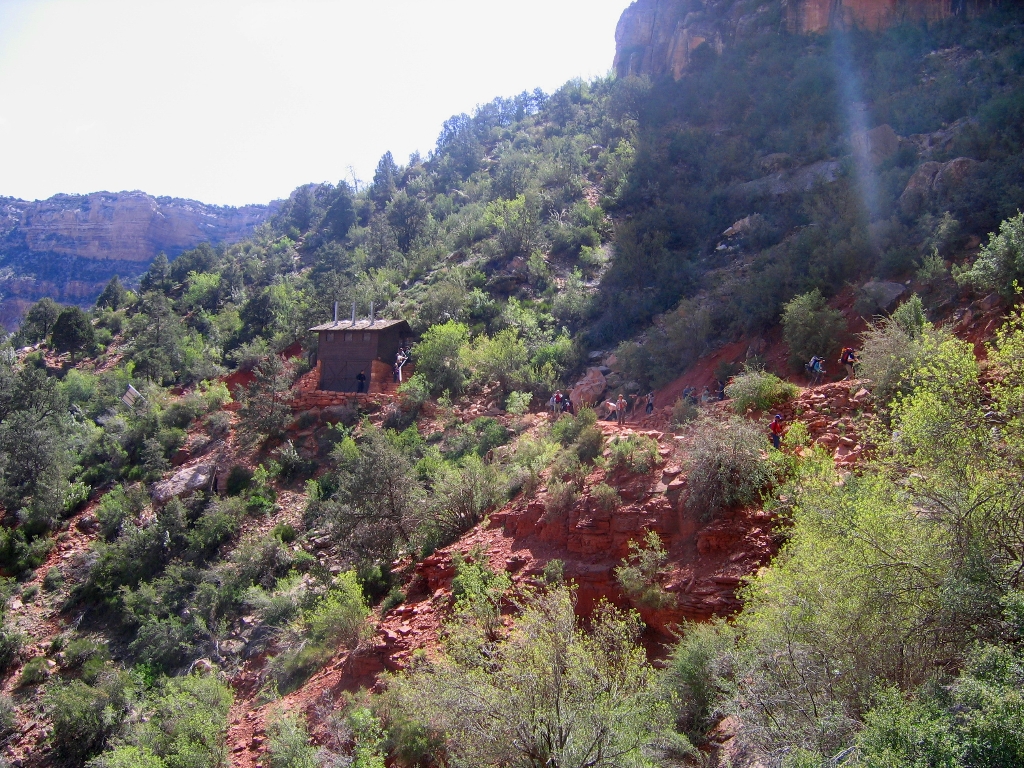
This popular day-hike destination on the Bright Angel Trail provides relief from the weather and extremes of all seasons, be it the summer heat or storms in the winter and spring. Vault toilets are available year-round. During the summer months, a water filling station at the resthouse provides potable water. An emergency telephone is located in the resthouse with a direct line to Park Dispatch in case of emergencies on the trail.
Just over 1,100 feet (335 m) below Grand Canyon's rim, this first rest area offers visitors a taste of the struggles and rewards Grand Canyon's steep trails present. For most visitors, the 3-mile (4.8 km) round-trip hike from the South Rim requires a 2-4 hour commitment depending on health, hiking ability, and rest stops.
Trail Information
Roundtrip Distance: 3 miles (4.8 km)
Elevation change: 1,120 feet (340 m)
Average Hiking Time: 2-4 hours
Hike Smart
Make a Plan
Once you have researched your trip and are confident in what to expect on the trail, leave your itinerary with someone who will notice if you are overdue and report it to 911.
Check the Weather
Summer temperatures in the shade routinely pass 100°F (38°C). Avoid hiking between 10 am and 4 pm, the hottest times of day.
From July to September, monsoons can build large, violent lightning storms. Seek shelter immediately.
In winter and early spring, temperatures can drop below 32°F (0°C) and upper portions of this steep trail become dangerously icy. Hard ice often conceals potentially hazardous passages. Over-the-shoe traction devices are highly recommended.
Pack Properly
It is critical to determine before your hike your needs for fluids and for snacks high in calories and salts. Consuming twice as many calories as during normal exercise is realistic for summer canyon hikes. The hike out of the canyon will likely take twice as long as the hike down. Wearing sun hats and cool, wet clothing will help regulate your core body temperature during warmer hikes.
Energy Balance
Your body needs energy-balancing proper nutrition and hydration are critical to your hiking success! Eat and drink while resting-sip fluids only when thirsty.
Too little water leads to dehydration and heat stroke. Excessive hydration and insufficient salt intake causes hyponatremia, a seizure-producing electrolyte disorder. If you do not feel well: seek shade, get wet, cool off, eat, and rest. Turning around may be your best option.
Is there something we missed for this itinerary?
Itineraries across USA


















































